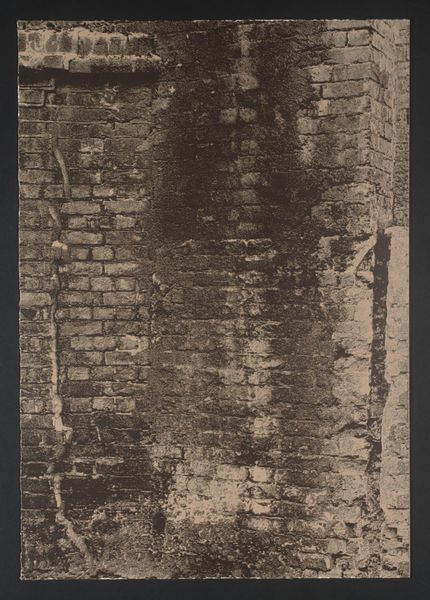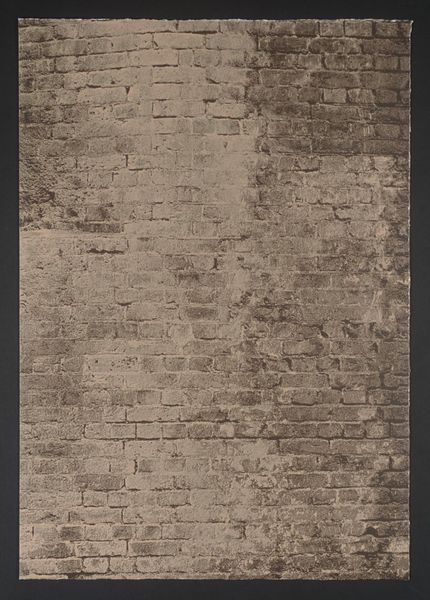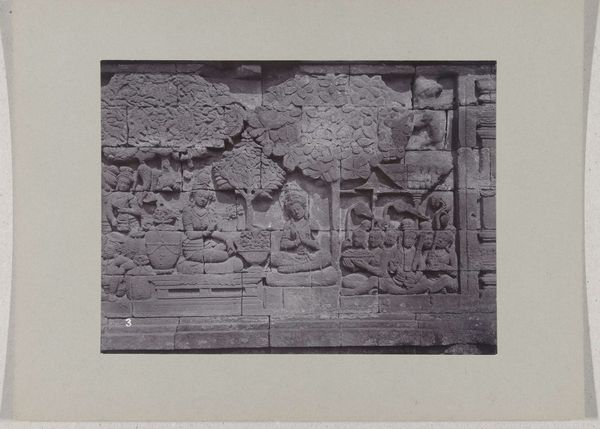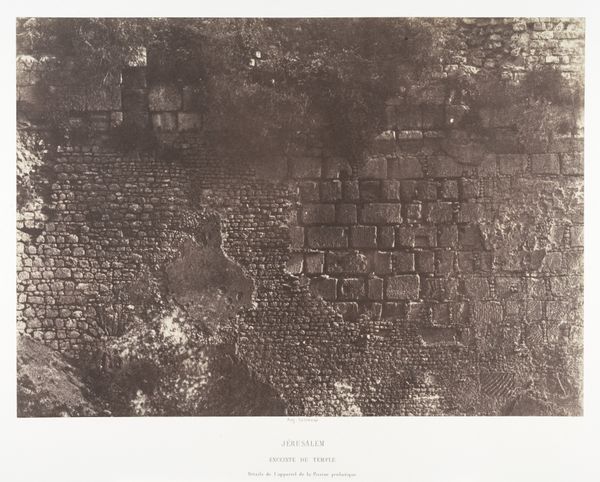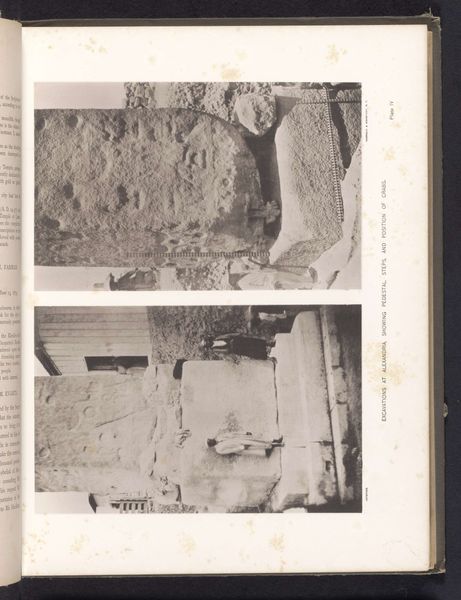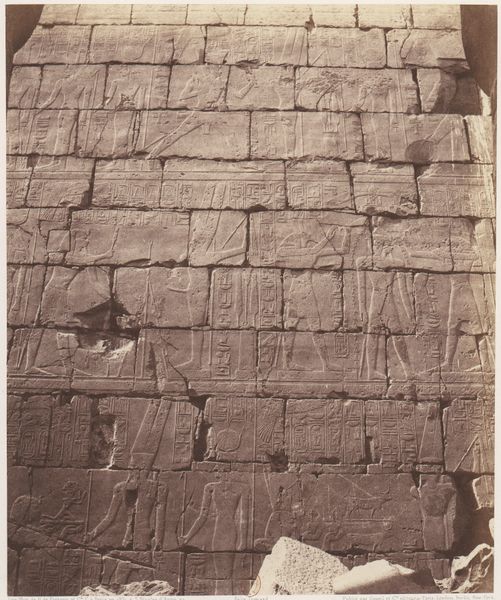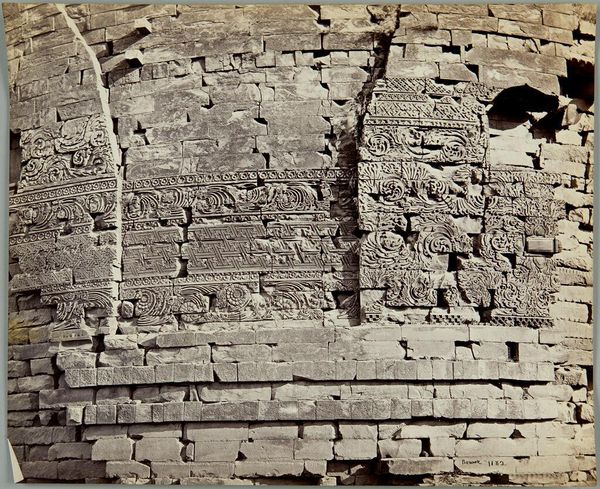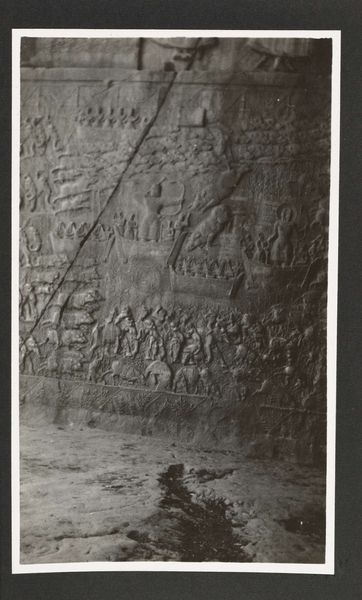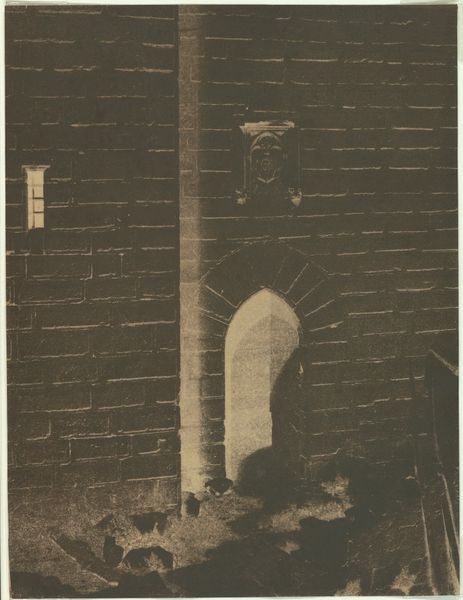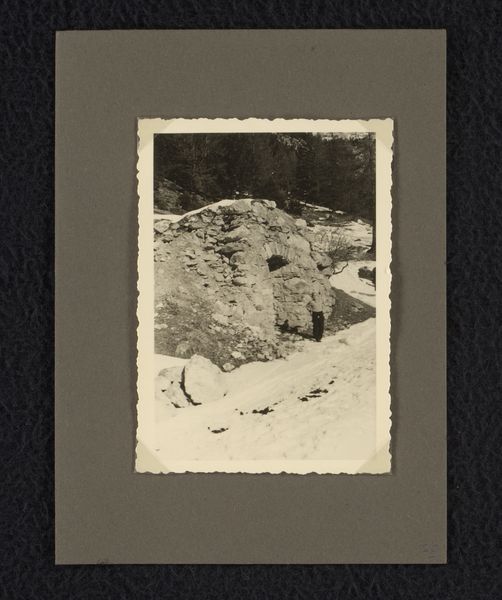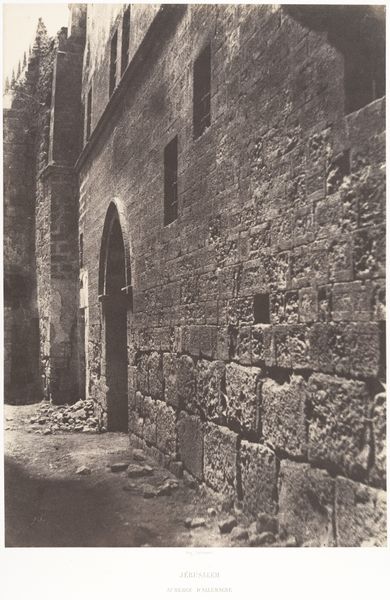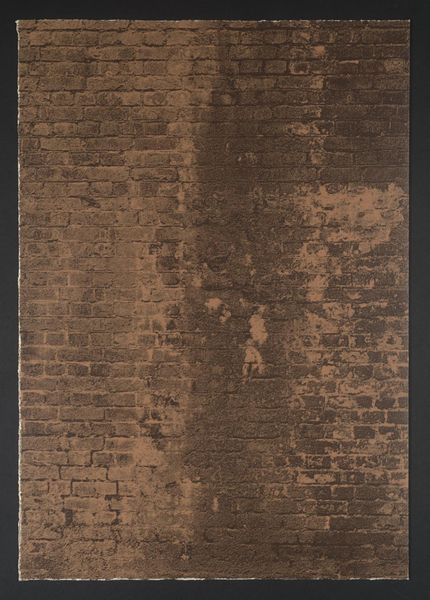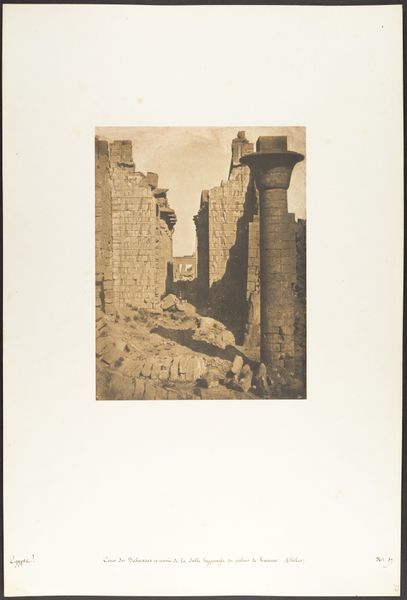
photography, architecture
#
sculpture
#
landscape
#
photography
#
ancient-mediterranean
#
architecture
Dimensions: height 141 mm, width 82 mm, height 124 mm, width 184 mm
Copyright: Rijks Museum: Open Domain
Editor: This is a photograph entitled "Bakstenen muur met dierlijke figuren te Babylon, Hillah" which translates to "Brick wall with animal figures in Babylon, Hillah" taken by A.G.A. van Eelde, possibly in 1925. I'm immediately struck by the texture and age of the brickwork; it really speaks to the passage of time and the weight of history. What strikes you most when you look at this image? Curator: The layering of histories is what captivates me. This photograph, taken in what’s likely the early 20th century, documents a fragment of ancient Babylon. What stories can the walls of a ruined civilization tell about its politics, religion, or daily lives? Consider how the depicted animal figures might have represented power structures, belief systems, or community identity. Can we understand ancient societies by looking at their visual artifacts? Editor: That's a really interesting perspective. It's easy to just see an old wall, but you're making me think about what it represents in terms of ancient society. It's almost like archaeology through photography. Curator: Precisely! And also consider the photographer's gaze: A.G.A. van Eelde, a Dutch artist, travels to document these ruins. This encounter reflects the dynamics of colonialism and Western interest in the ancient world. Whose narratives were amplified? Whose voices were silenced? What kind of message was delivered to the European and Western worlds with this picture? How did photography play a role in shaping our understanding of ancient cultures? Editor: I never would have thought about it that way, considering the power dynamics at play when the photo was taken. Curator: Exactly. Examining the visual language of historical documentation is vital for critically understanding both the subject and the context in which it was recorded and presented. Editor: That gives me a lot to think about in terms of how we interpret historical images, seeing beyond the surface and questioning the narrative they present. Curator: It's about acknowledging the complexities inherent in any visual representation and actively seeking out diverse perspectives to challenge dominant narratives.
Comments
No comments
Be the first to comment and join the conversation on the ultimate creative platform.
